Who
David Dziuban, Owner and General Manager of Whitecap Mountains, Wisconsin
Recorded on
March 13, 2023
About Whitecap Mountains
Click here for a mountain stats overview
Owned by: David Dziuban
Located in: Upson, Wisconsin
Year founded: 1964
Pass affiliations: Indy Pass Allied Partner
Reciprocal partners: Whitecap lists the following partners on its season pass page - it is not clear what the benefit is for each mountain: Grand Targhee, Wild Mountain, Mount Bohemia, Sunlight, Camp 10, Lee Canyon, Arizona Snowbowl, Lee Canyon, Mont du Lac.
Closest neighboring ski areas: Mt. Zion (28 minutes), Big Powderhorn (34 minutes), Snowriver (40 minutes), Mt. Ashwabay (1 hour, 15 minutes), Porcupine Mountains (1 hour, 21 minutes)
Base elevation: 1,295 feet
Summit elevation: 1,750 feet
Vertical drop: 455 feet
Skiable Acres: 400 acres
Average annual snowfall: 200 inches
Trail count: 42 (4 expert, 12 advanced, 12 intermediate, 14 beginner)
Lift count: 6 (4 doubles, 1 triple, 1 carpet) – the North Pole-South Pole double functions as two separate chairs, even though it is one long continuous lift. Skiers are not allowed to ride on the middle section, which passes over a long valley. The carpet was not yet functional for the 2022-23 ski season. Whitecap has an additional triple chair that is currently dormant, but which Dziuban intends to resurrect.
Here is Whitecap’s current trailmap:
However, I far prefer this older version, which is my favorite trailmap of all time:

Why I interviewed him
Our ski areas exist where they do for a reason. That rare mix of hills, reliable precipitation, wintertime cold, a near-enough population, a road to get there. Slopes steep enough but not too steep. Water nearby. Someone with enough cash to run chairlifts up the incline and enough brains to put the whole operation together into a viable business.
There are fewer geographic bullseyes of this sort than you may suppose. Look carefully at the map of U.S. ski areas – they are mostly clustered around a few-dozen rarified climate zones. Lake-effect bands or mountain spines or high-altitude nests resting at a desert’s edge. Several dozen have been force-born around large cold-weather cities, of course, bulldozed into existence where cold and water abound but hills are lacking.

We all know the epicenters upon which Epic and Ikon have anchored their empires: the Wasatch, Tahoe, the I-70 corridor, the Vermont Spine. But smaller, less celebrated-by-the-masses clusters dot the continent. The Interstate 90 corridor from 49 Degrees North and Mt. Spokane through Schweitzer, Silver Mountain, and Lookout Pass. Mt. Hood, one mountain that is home to four ski areas. Northern New Mexico, where half a dozen ski areas surround the fabled Taos.
One of the most reliable of these micro-snowzones is Big Snow Country, a hilly wilderness straddling the border of northern Wisconsin and Michigan’s Upper Peninsula. There, seated west-to-east, are four – once five – ski areas: Whitecap Mountains, Mt. Zion, Big Powderhorn, and Snowriver, which is a union of the once-separate Indianhead and Blackjack ski areas (now known as Jackson Creek Summit and Black River Basin). Seated fewer than a dozen miles above them, brooding and enormous, is Lake Superior, one of the most reliable lake-effect snowmachines on the planet:
So much of Midwest skiing is funky and improvisational, a tinkerer’s paradise, where the same spirit that animated 20th century factories willed one of the world’s great ski cultures into existence. There are not many hills around Milwaukee or Minneapolis or Detroit, but there are plenty of ski areas. The people of the Midwest do as they please. But the ski areas of Big Snow Country are different. There is so much skiing here because the terrain and the climate seemed sculpted exactly for it.
As a result, the skiing is genuinely sublime. The great tension here is the opposite problem that most of the region’s mobbed ski areas face: great skiing, too few skiers. Big Snow Country is far from pretty much everything. Four hours from Minneapolis, five from Milwaukee, six-and-a-half from Chicago. Residents of those cities can reach Park City or Keystone faster than their Midwest neighbors.
So what to do? For decades, these four (or five), ski areas have struggled to pin themselves to skiers’ to-do lists. Mt. Zion, the smallest of the bunch, is a protectorate of Gogebic Community College, which hosts one of the nation’s only programs on ski area management. Indianhead and Blackjack cycled through generations of owners and were finally combined and then sold, last year, to Charles Skinner, owner of the sprawling Granite Peak and Lutsen ski areas in Wisconsin and Minnesota. Skinner, who transformed Granite from a faltering backwater into one of the Midwest’s top ski areas, is already slinging a high-speed sixer up the hillside at Snowriver and will surely connect the two ski areas within a few years. That leaves Big Powderhorn and Whitecap with a problem.
How to respond? Powderhorn has at least enjoyed stable management and a loyal customer base. Whitecap, however, has struggled. Decades of deferred maintenance pushed skiers away. A 2019 lodge fire erased a crucial piece of infrastructure that has yet to be replaced. The advent, in the region, of the Epic, Ikon, and Indy Passes – not to mention a modernized Granite Peak, two hours closer to pretty much everything, and an unhinged and dirt-cheap Mount Bohemia, not so far to the north – has only clouded Whitecap’s market position.
David Dziuban arrived at the ski area in 2016, and slowly took control over the next few years. It was a period of personal tragedy for him. As soon as he took full ownership, the fire hit. It would have been enough to make anyone surrender. But Dziuban has found in Whitecap both salvation and mission. This place, so naturally blessed, has the bones to be one of the Midwest’s great ski areas. But it needs a push, a pull, a shove into our current moment. Dziuban is the guy to provide all three.
What we talked about
A snowy Wisconsin winter; Whitecap’s unique trail footprint; the great Midwest ski factory; a single sentence in a Wilmot liftline that changed Dziuban’s life; a wild scheme to score a first job as a snowmaker at Plumtree, Illinois; turning down a job at Killington to work at scrappy Magic Mountain; Magic in the ‘80s; making Magic’s Timberside connection; Mt. Tom, Massachusetts; homemade snowmaking; Elk Mountain, the hidden gem of Pennsylvania; a rigged splice gone wrong; Whitecap, lost in the wilderness; first impressions of a run-down and lightly used Whitecap; the long and convoluted process of taking ownership of the resort; balancing personal trauma and loss with the mission of revitalizing the ski area; taming the local homeowners’ entitlement; fire levels the lodge; why Whitecap opened the next day and why it was so vital that it did; plans for a new lodge; Whitecap’s huge development potential; why the ski area hasn’t set up the new conveyor lift it purchased last year; snowmaking; assessing Whitecap’s unique lift fleet; where we could see a new lift at Whitecap; thoughts on the long chair (North Pole/South Pole); getting the CTEC lift running again; “I want to remain affordable to everybody”; why Whitecap launched a $295 (now $325) season pass and how that product has been selling; the surprise response from a one-day season passholder reciprocal deal with Mount Bohemia; thoughts on the Indy Pass and the Allied program; and that Whitecap aura.
Why I thought that now was a good time for this interview
Not to repeat myself, but allow me to repeat myself. A skier living in the Upper Midwest currently enjoys the following options for full-season skiing:
Purchase a $676 Epic Local Pass, which delivers turns all season at Wilmot or Afton Alps, plus basically unlimited options for runs west to Colorado, Utah, Tahoe, and Whistler.
Purchase an $829 Ikon Pass and forgo Midwest skiing altogether, hopping frequent flights to Denver and Salt Lake City from major hub airport Minneapolis-St. Paul (MSP).
Purchase a $329 Indy Pass for two days each at major ski areas across the region, including some of the best and most-developed in Minnesota and Wisconsin: Granite Peak, Lutsen, Spirit Mountain, and, perhaps most significantly for Whitecap, its neighbors Big Powderhorn and Snowriver (both of which are in Michigan).
Purchase a local season pass at any of dozens of ski areas that sit within 30 minutes of downtown Minneapolis, Madison, or Milwaukee.
Scratch the gnar itch with a $109 ($99 if you can forego Saturdays), season pass to Mount Bohemia, the ungroomed natural-snow mecca hanging off the top of the UP. The pass includes reciprocal days at ski areas throughout the Midwest and the West.
So, what does Whitecap do? First, control what you can: fix the beat-up lift fleet, improvise a lodge, bring stability to its operations. Dziuban has checked off that list. Second, modernize: rebuild the lodge, build out snowmaking (the current system consists of fewer than half a dozen guns), re-activate the mothballed triple chair. All of this is in progress. But there’s something else: how does a ski area set itself apart in a region dense with ski areas but not with skiers? What is the story it’s going to tell? Dziuban has a good one, and it’s one every skier in the region ought to hear.
What I got wrong
I noted that Whitecap had “360-degree exposure,” when it in fact has slopes primarily facing just three directions: west, north, and south.
Why you should ski Whitecap Mountains
In February, I flew into Minneapolis for a five-day Upper Midwest ski tour, making me perhaps the only person this century to travel from New York to Minnesota on purpose to ski. At least that was my conclusion from multiple chairlift conversations with befuddled locals. I swung through 11 ski areas: Welch Village, Afton Alps, Granite Peak, Nordic Mountain, Snowriver, Big Powderhorn, Mt. Zion, Whitecap, Spirit Mountain, Trollhaugen, and Buck Hill. Each was unique and memorable, in the way that every ski area is. But one resonated with me more than the others: Whitecap.
I have visited hundreds of ski areas, all over the world. There is nothing quite like Whitecap. It’s an enchanting place. Sprawling and gorgeous. Narrow paths wound through woods, leading into and around broad meadows, glades everywhere, all of it knitted together in a Zelda-like sprawl primed for exploration. While the vertical drop is small, the place is multilayered and complex. It is one of the few ski areas where I have ever felt legitimately lost. I took 27 runs and still didn’t see half the place.
Also: there was no one else there. Granted, it was a Wednesday. But coverage was excellent: 100 percent open. I skied that day with Jacob, Whitecap’s grooming ace, a Telluride refugee who had carpeted a shocking breadth of acreage overnight before meeting me to ski. He kept telling his friends from Colorado that they had to move here, he told me. The pace was slower, and he could afford to live. He’d given up finding anything affordable near Telluride, and had instead commuted in from a desert campervan colony hours away. He’d had enough, come back east, back home, with his campervan and his dog. He didn’t see any reason to return to Colorado. Yes, the skiing there is amazing, but the skiing is good here, too, and the stresses of daily life had evaporated. He now lived in the hotel. His commute to the snowcat was a few dozen steps. This was a life that was pleasant, and sustainable. As Western mountain-town life became untenable, places like Big Snow Country, with reliable snow and lower costs for everything, would become more attractive to those who wanted to make skiing central to their lives, he said.
I’m not saying you should move to Whitecap. But you should visit. Everyone should ski the Midwest at least once. Just to understand what it is, this machine that churns out so many of the nation’s most passionate skiers. And when you do go, make sure Whitecap is on your tour.
Podcast Notes
On Plumtree, Illinois
Dziuban’s ski career began at Plumtree, a 210-vertical-foot landfill bump in Illinois. Here’s the 1978 trailmap:
On the podcast, I said that I wasn’t sure if the place was still operating. Its website states that the ski area is “closed for renovations,” and I believe that has been its status for at least as long as I’ve tracked season passes nationally (three seasons). I’m trying to confirm that. Even if it does re-open, it looks as though the place is just a residents’ amenity for whatever gated community it sits in. Here’s a bit more on the joint, per skibum.net:
Former public area, Plumtree is now a private club for Lake Carroll property owners, guests, etc. Aging equipment, wide open bowls, decent place. Look up “typical skiing in the Midwest” and you’ll find Plumtree Ski Area. Wish there were more Plumtrees open to the general public.
On Magic Mountain
Dziuban spent several years at Magic Mountain, Vermont. He was there from the mid-80s to the early ‘90s, a period that included the interlink with the lost Timber Ridge ski area on the backside of Glebe Mountain. Here’s what they looked like connected:
These days, skiers are still allowed to traverse from Magic over to “Timberside,” which is privately owned, and ski down. They have to find their own way back to Magic, however, as the Timber Ridge lifts are long gone.
On the Wine Hut
Follow the trails skier’s left of the Midway double chair, and you’ll sweep past the Wine Hut on your way to the loading station. It’s one of the Midwest’s cooler après joints, though I’ll admit that I did not sample the goods on the February Wednesday I stopped in.
On the North Pole/South Pole double
Whitecap is home to one of the most amazing lifts in America - an up-and-over Hall double that serves as two separate lifts - the North Pole double and the South Pole double. Skiers are not allowed to ride across the middle section, which soars more than 125 feet over the meadow between the two top stations - with no restraint bar. I snagged this video standing beneath the midsection:

And here’s a still pic from the valley floor - note the tower hoisted onto the steel lift:
Here’s a view looking from the North Pole side across the valley to the South Pole:
Going up South Pole:
On Whitecap’s dormant triple chair
A seemingly abandoned lift terminal sits on Whitecap’s summit, the head of a skeleton that follows a liftline down the mountain.
This lift, said Dziuban, is actually not dead yet. He’s already fabricated some parts necessary to restore the 1991 CTEC triple to a functional state, as he explains in the podcast.
The Storm publishes year-round, and guarantees 100 articles per year. This is article 31/100 in 2023, and number 417 since launching on Oct. 13, 2019. Want to send feedback? Reply to this email and I will answer (unless you sound insane, or, more likely, I just get busy). You can also email skiing@substack.com.




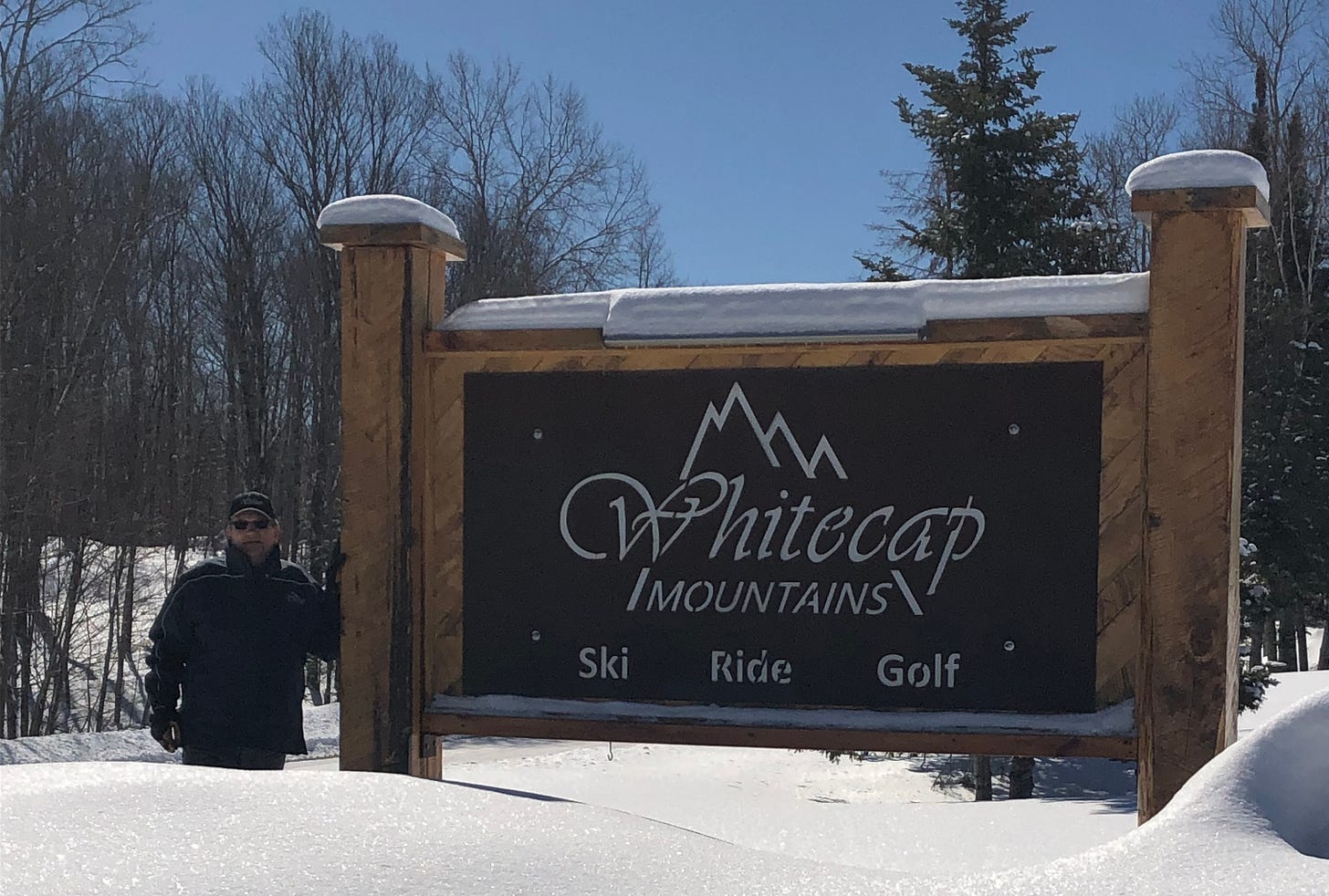
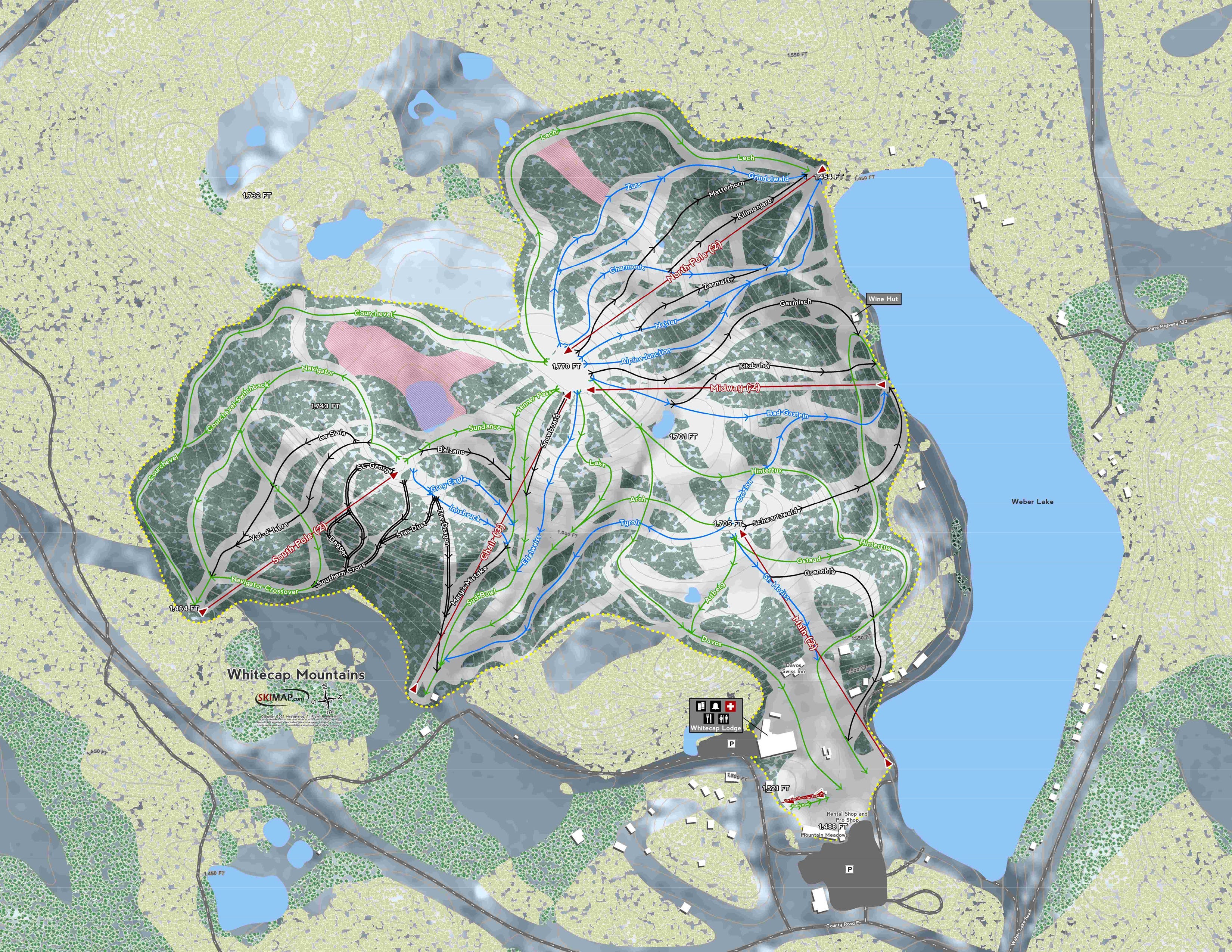

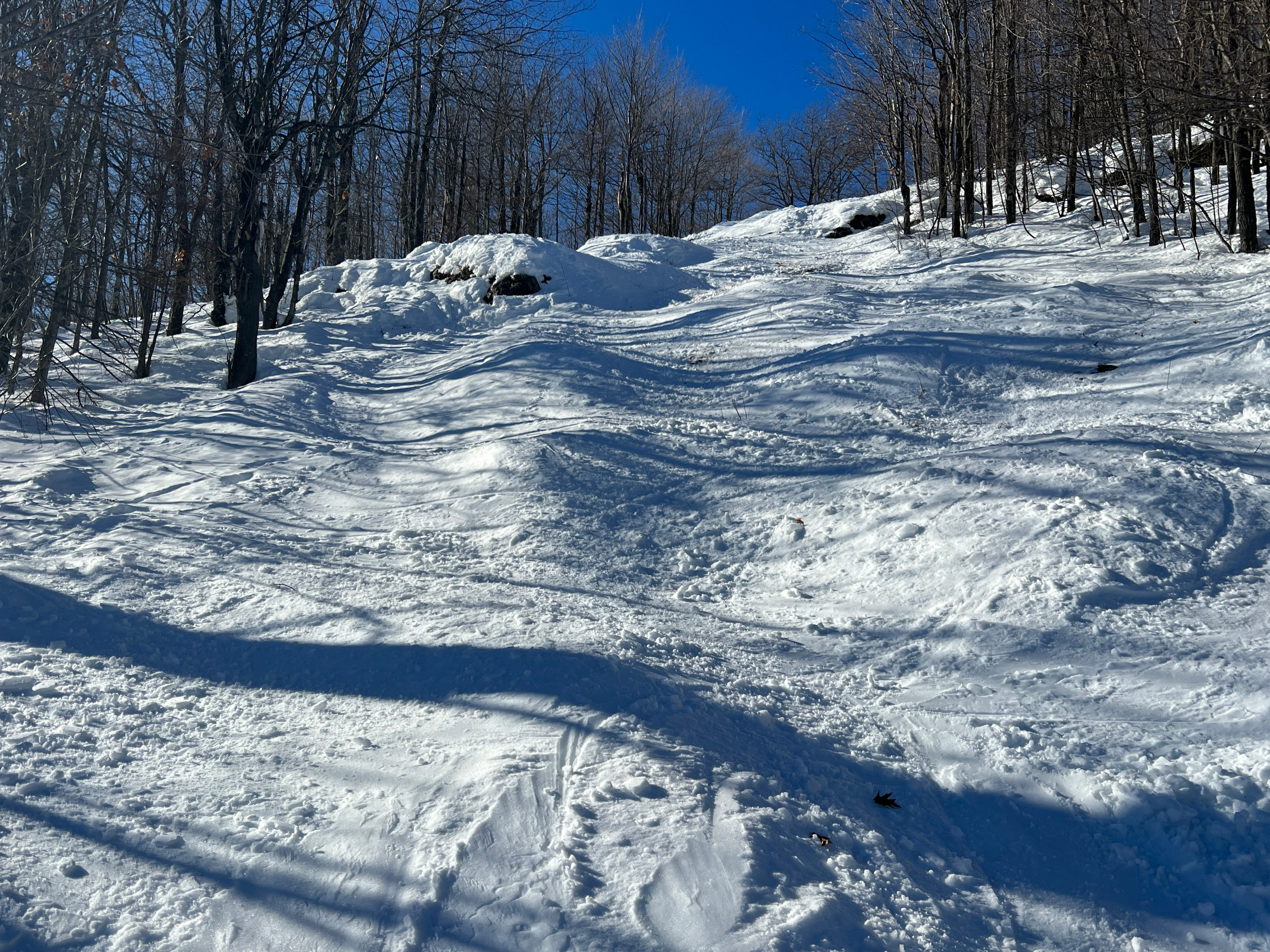

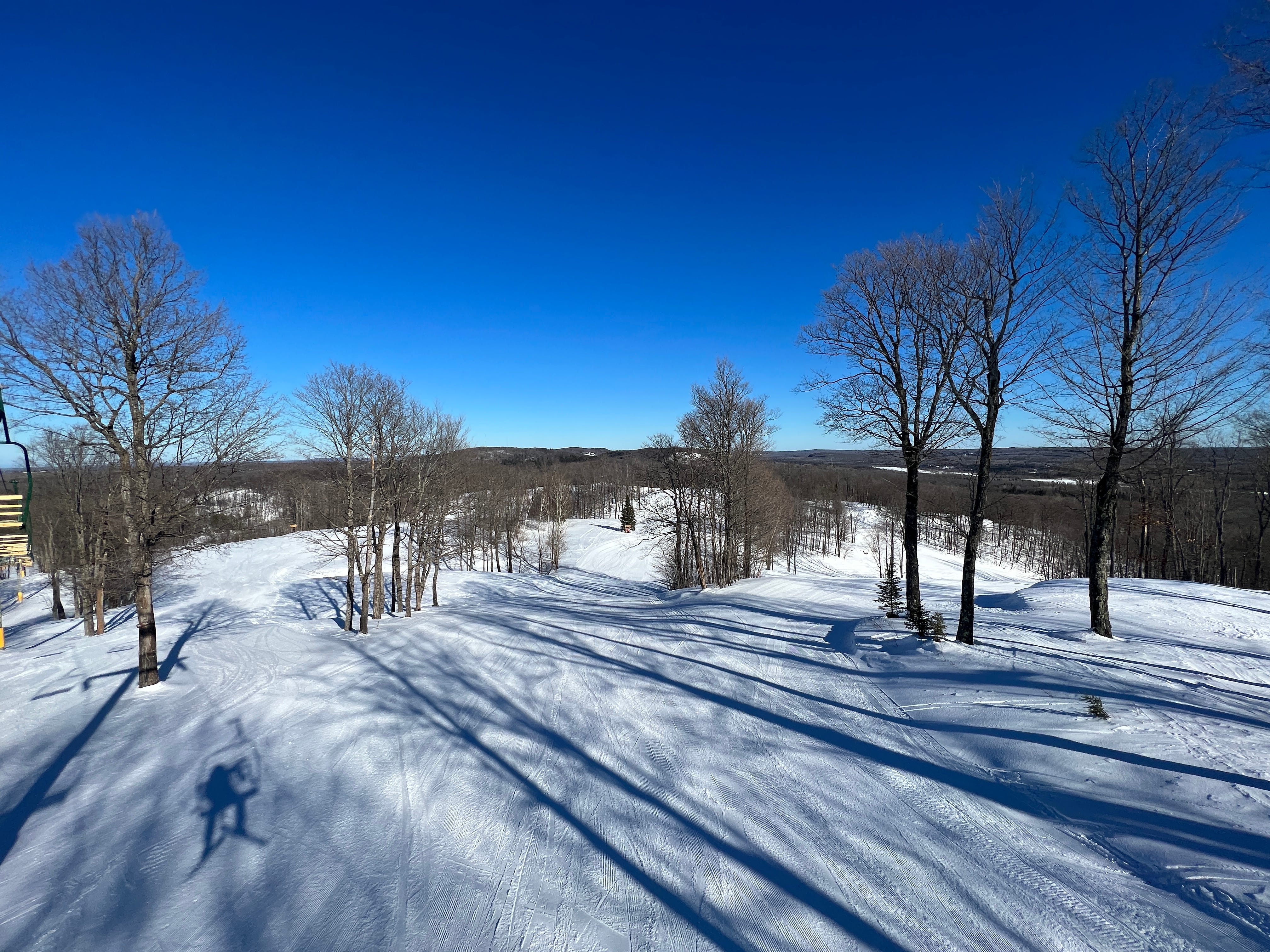
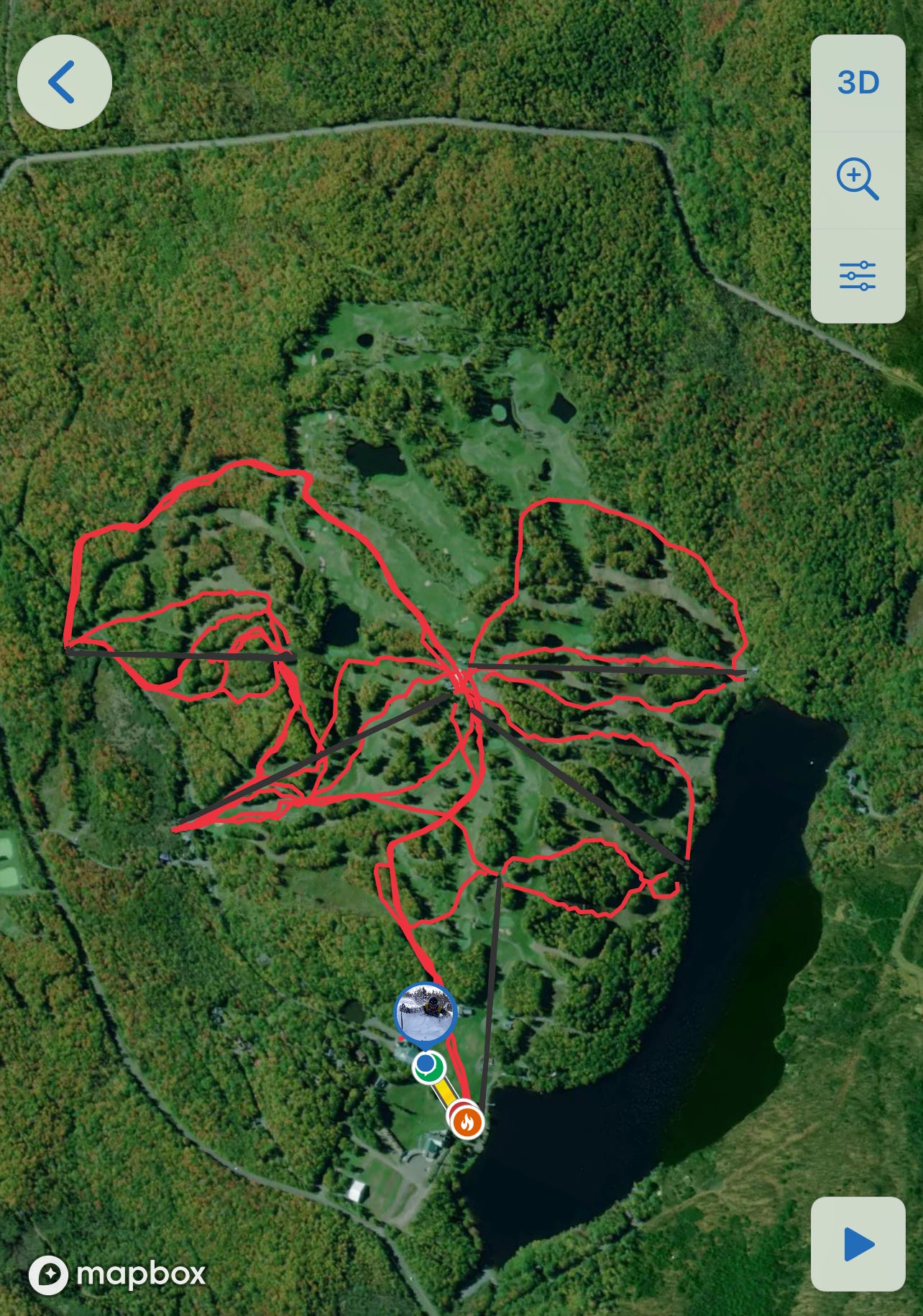
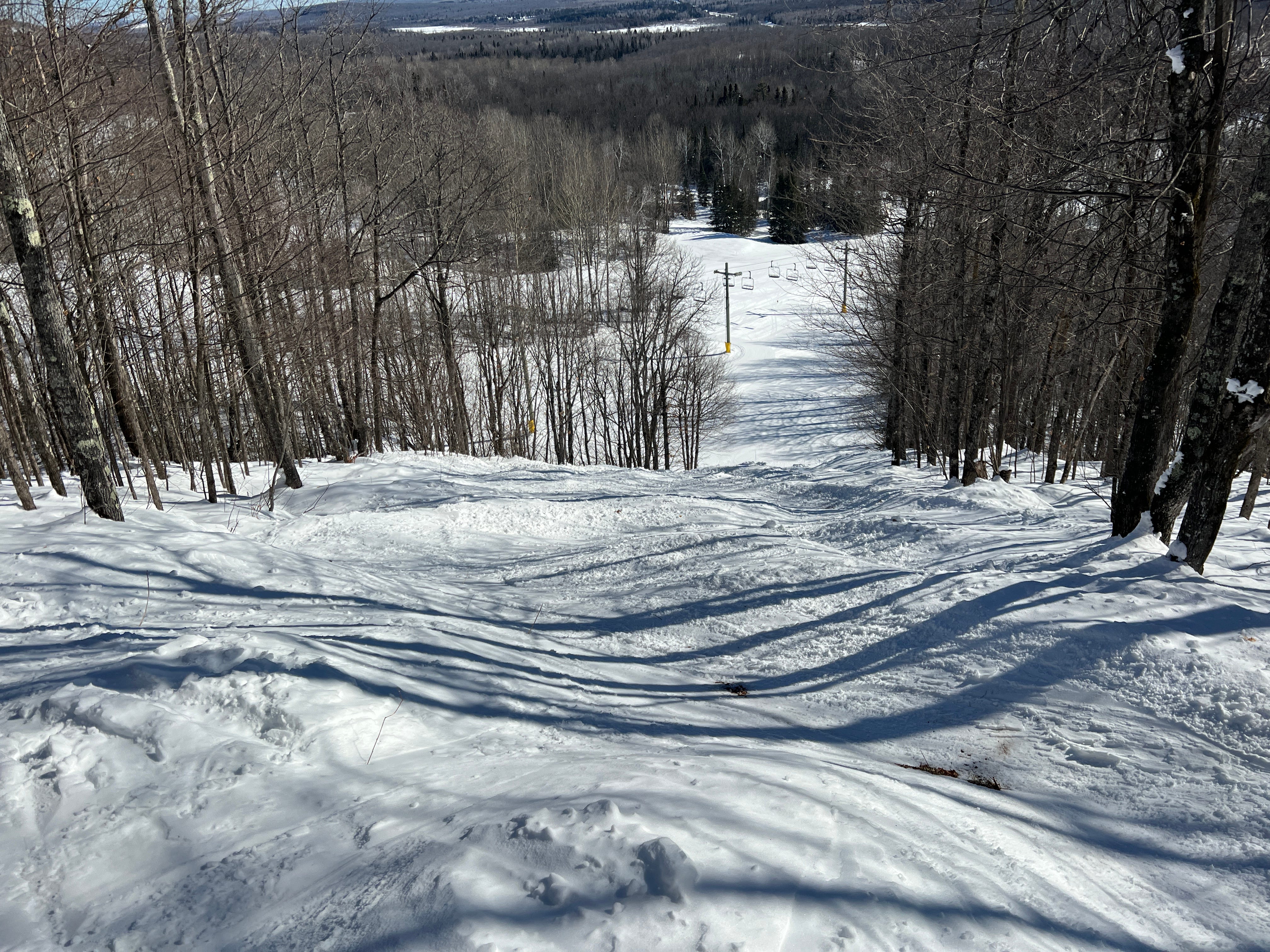
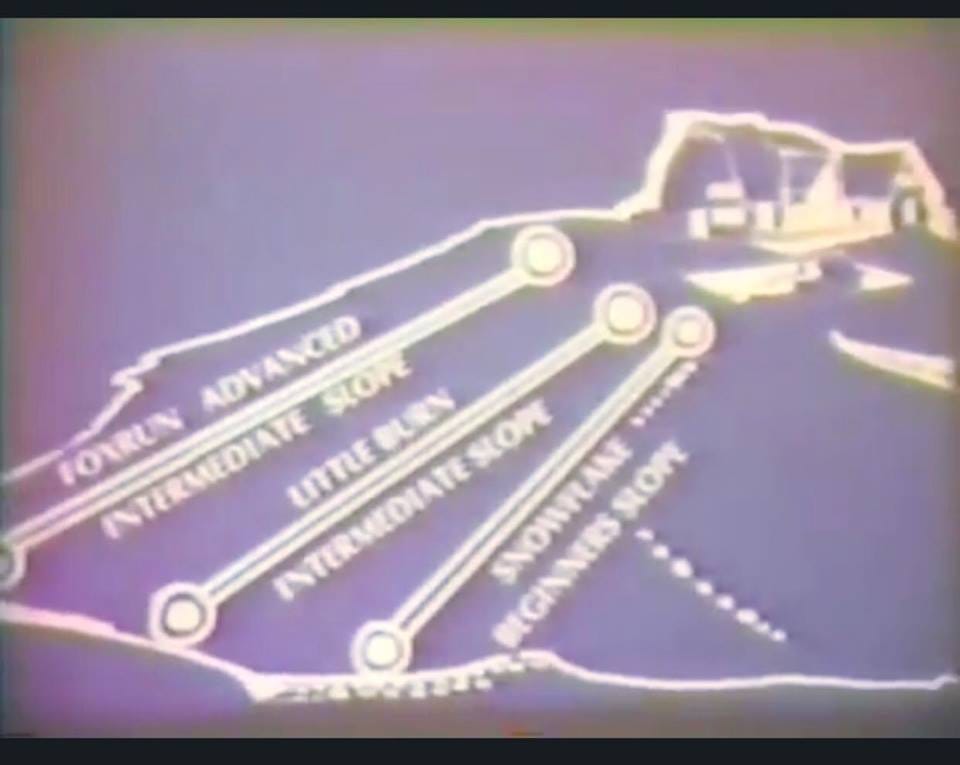
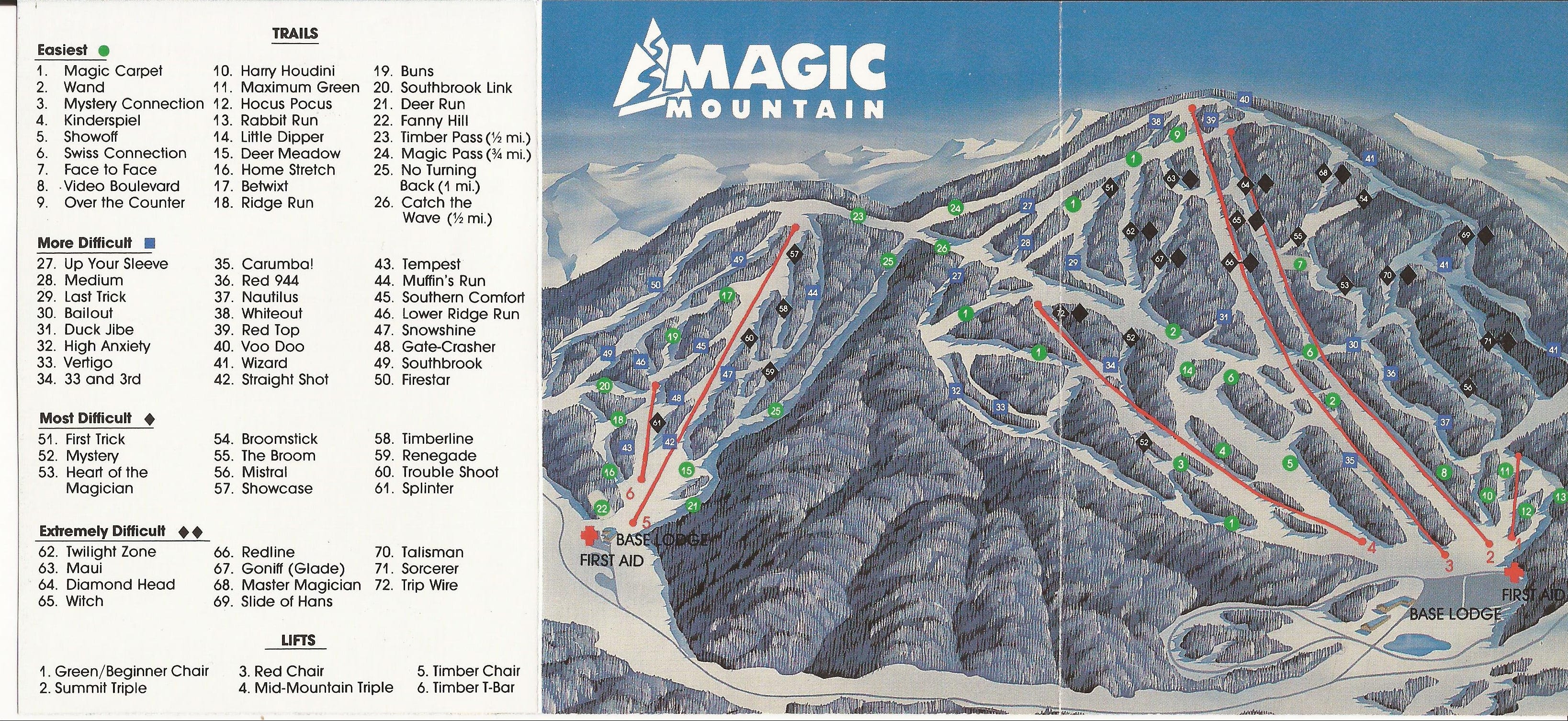
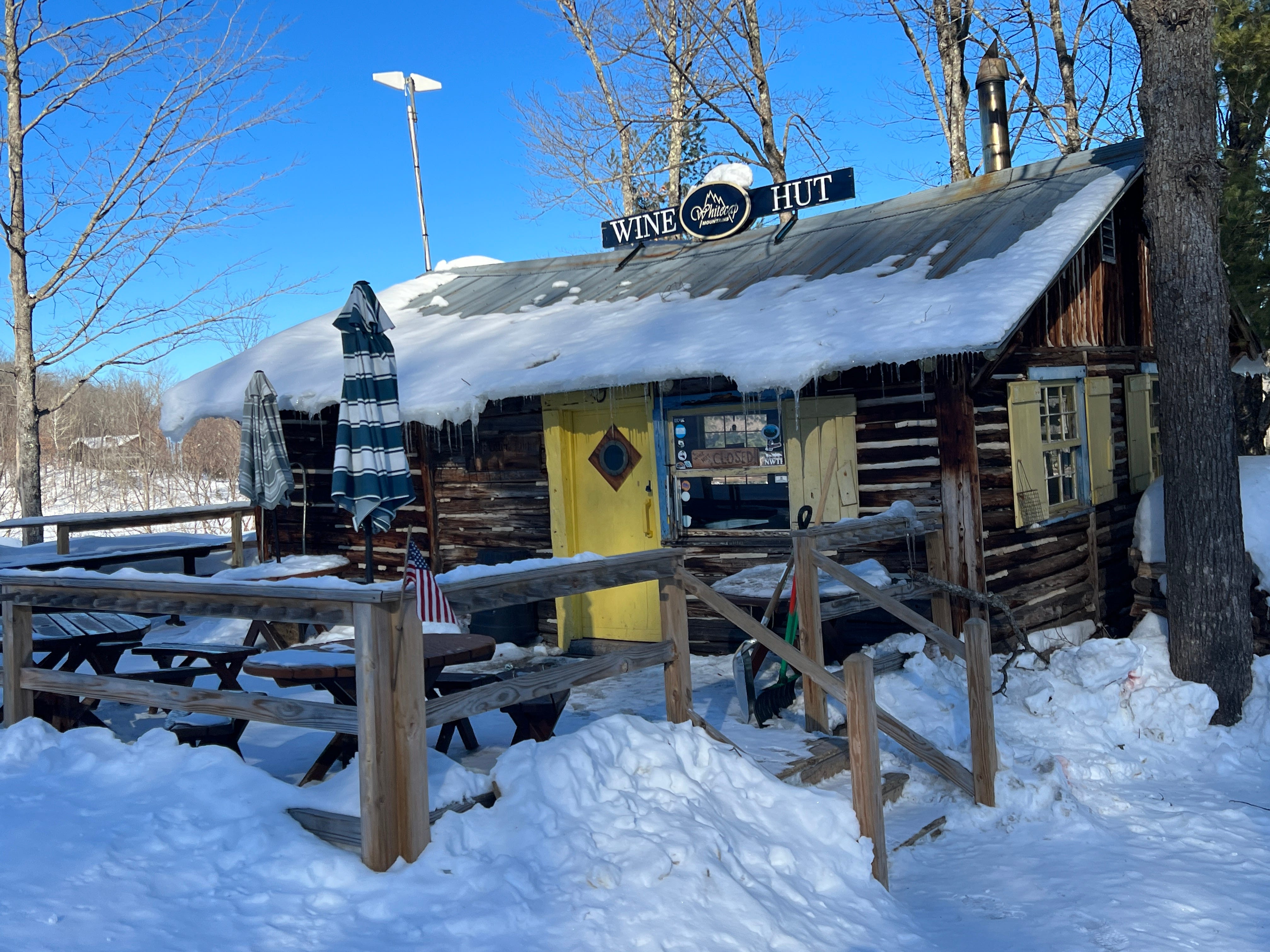

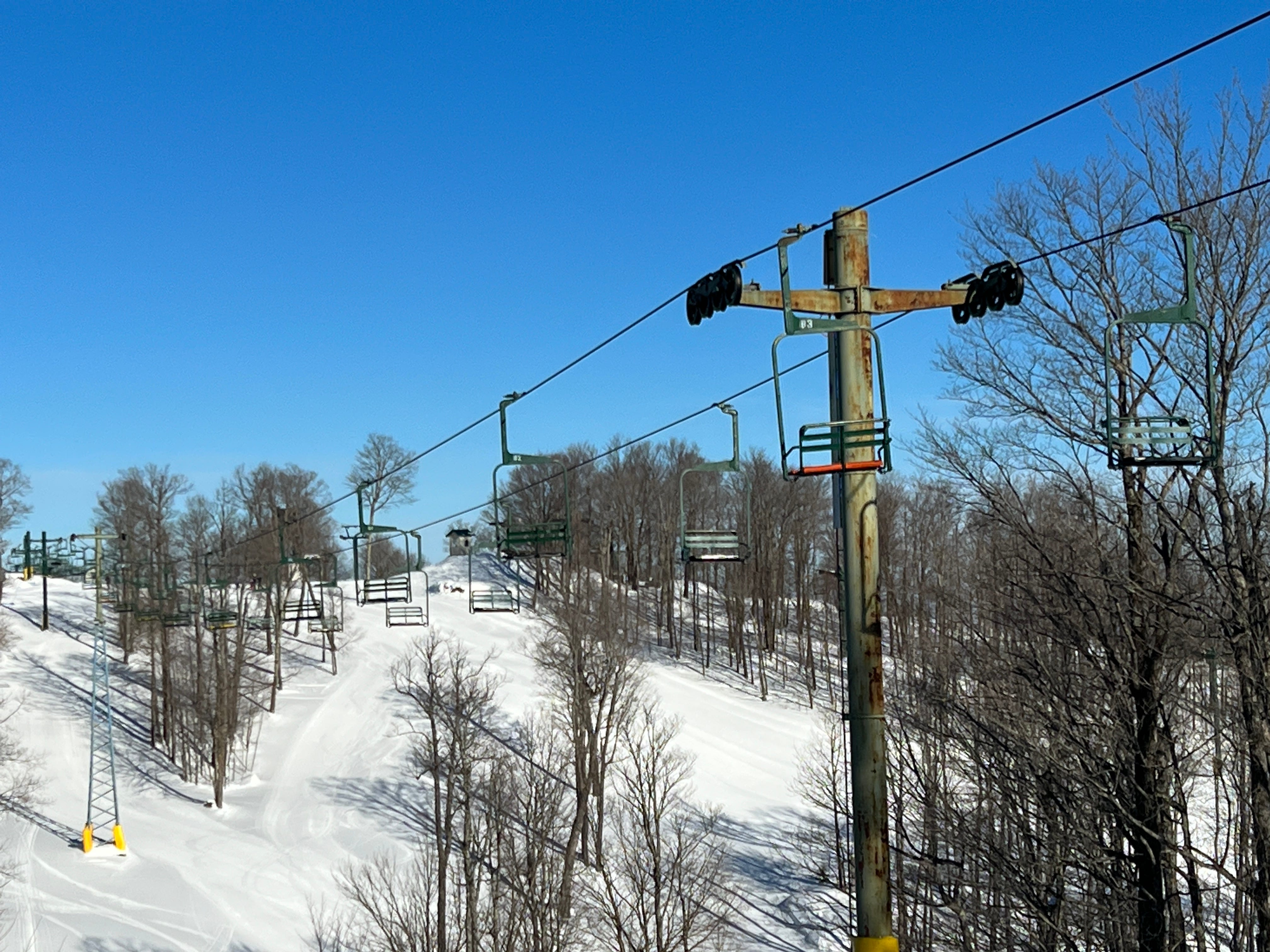
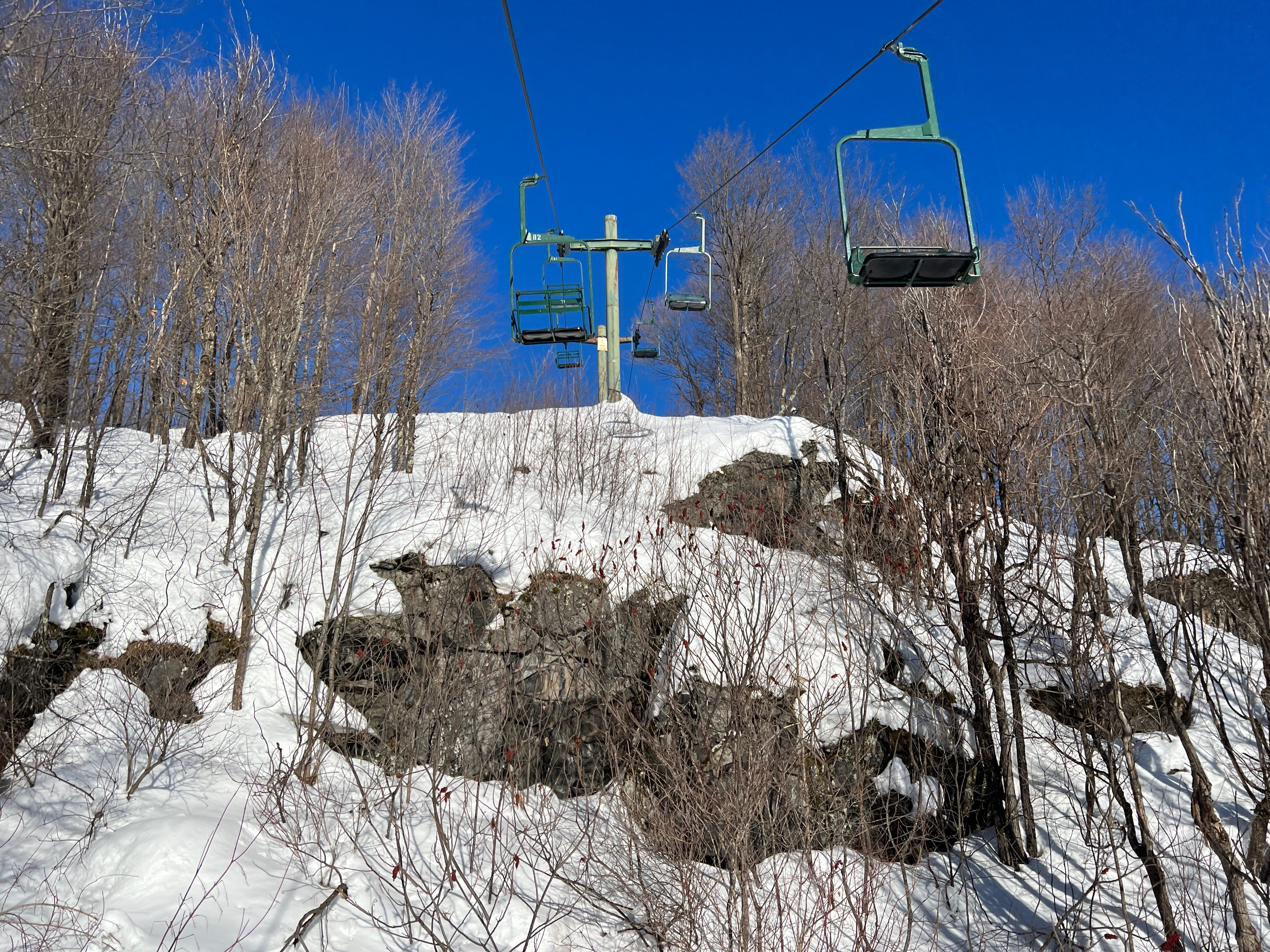




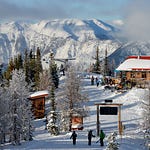


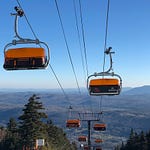
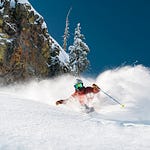
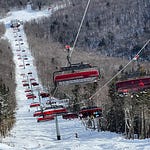

Podcast #122: Whitecap Mountains Owner & General Manager David Dziuban